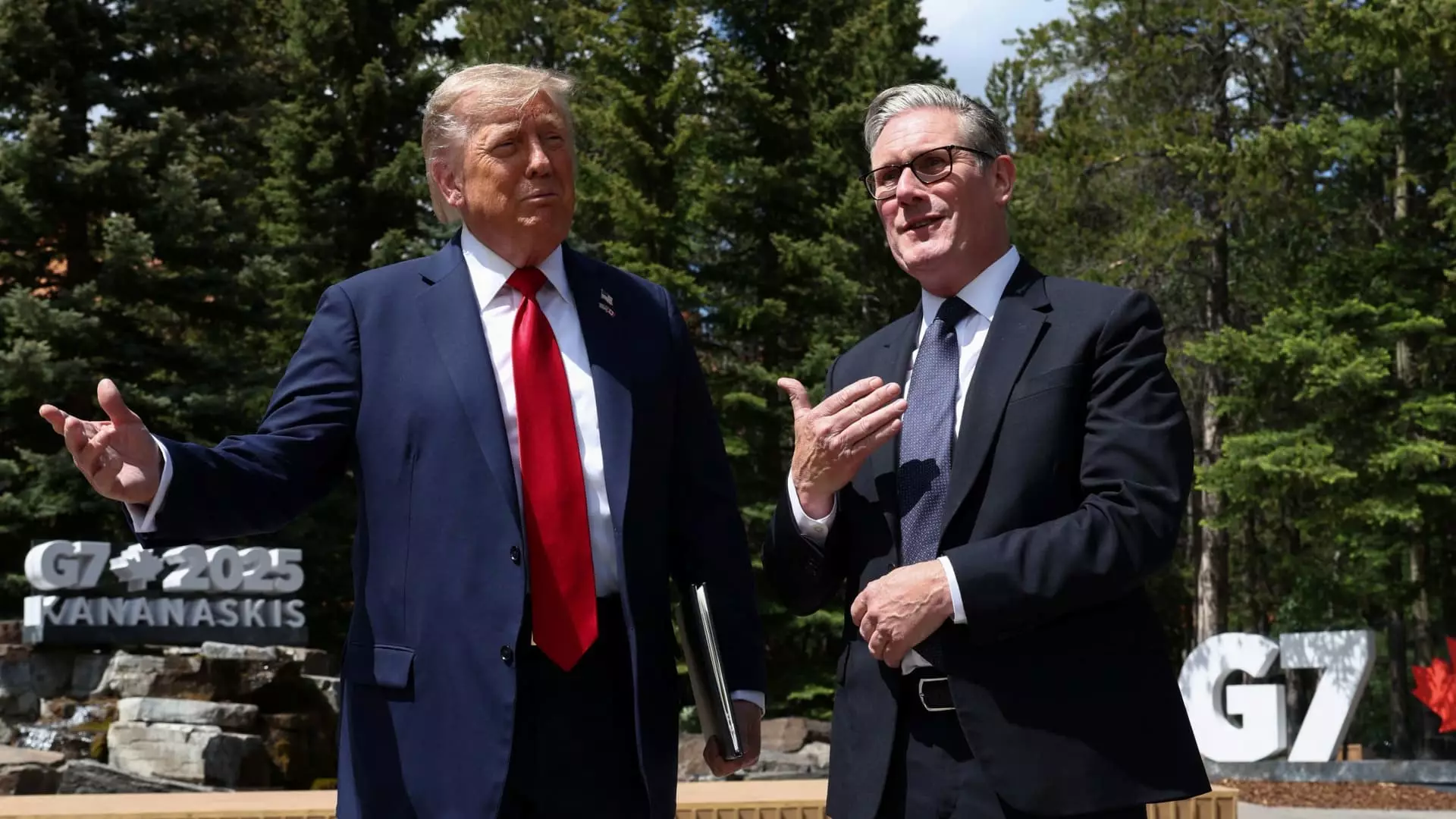In a move that has been described as a “fantastic” step toward reinvigorating trade relations, President Donald Trump recently finalized a tariff reduction agreement with British Prime Minister Keir Starmer amidst the G7 Summit in Canada. While this development could certainly be viewed as a positive signal, it is crucial to evaluate the underlying complexities and potential pitfalls of this arrangement. The ramifications of this agreement extend beyond mere economic benefits; they touch on broader themes of international solidarity, trade fairness, and the fragility of diplomacy.
Trump’s grandiose characterization of this deal suggests a relationship between the United States and Britain that remains robust. However, the buzz surrounding the announcement begs the question of whether such sentiments are deeply rooted or merely performative. The reality is that the agreement primarily alleviates burdens on certain industries—British automobiles and aerospace—while leaving significant sectors, such as steel, aluminum, and pharmaceuticals, precariously unaddressed. This selective easing of tariffs signals a corridor of dependency rather than a fully realized, reciprocal trade relationship.
The Intricacies of Industry-Specific Adjustments
One of the agreement’s highlights is the implementation of a 100,000 car quota for British manufacturers at a reduced tariff rate of 10%, compared to the punitive 25% faced by other countries. Although this provision is advantageous, it is worth noting that such quotas can lead to market distortions and reliance on government-sanctioned limitations. It raises questions about genuine competitiveness versus government-favored conditions.
Moreover, while the lifting of tariffs on the UK aerospace sector is undoubtedly a win for Britain, one must consider the geopolitical context. The aerospace industry is a hallmark of British innovation and manufacturing, and these tariffs had a substantial impact. However, this partial relief comes with its own set of strings attached, notably the condition for Britain to demonstrate security within its steel supply chains. Here, the deal appears to sideline rather than resolve ongoing issues, suggesting that further negotiations may be inevitable.
A Divided Outlook on Other Industries
In the backdrop, industries such as pharmaceuticals are inexplicably omitted from the discussion, driving a wedge of concern among stakeholders. Despite British assurances to safeguard future trade negotiations on this front, the lack of immediate action can be viewed as an alarming red flag for an industry that plays a critical role in both economies. Will the promise of preferential treatment for UK pharmaceuticals materialize, or will it be relegated to a future agenda that may dance on the margins of political priority?
Furthermore, Trump’s comment about the UK being “very well protected” because he “likes them” epitomizes a concerning trend in international relations, where personal affection potentially overtakes objective policy-making. Relationships based on personal whims risk volatility, and the neglect of necessary structural equity frays the fabric of genuine partnership. Conditionality, even if rooted in positive sentiment, can evolve into a transactional dynamic fraught with uncertainty.
Immediate Wins with Long-Term Consequences
Undoubtedly, the UK government has hailed this agreement as a significant boon for its industries, with Trade Secretary Jonathan Reynolds promoting its implications as a testament to swift negotiation capabilities. However, despite this apparent victory, it is essential to identify whether such wins are sustainable or merely symptomatic of a larger ecosystem teetering on the brink of irregularity. As aspects of the deal remain unfulfilled, one must question the vulnerability of this newly established framework should political winds shift in either the American or British administrations.
Britain’s approach to relationship-building in this context could set a dangerous precedent for negotiating future trade agreements. While the celebratory chatter surrounding tariff reductions is tempting to endorse, we must remain vigilant. Trade agreements ought to reflect mutual interests and collaborative growth rather than focusing narrowly on immediate gains at the potential expense of much-needed reforms and systemic equity.
As the dust settles on this deal, the focus should shift beyond surface-level optimism to a deeper understanding of how such agreements unfold over time. Are we witnessing the beginning of a robust trade collaboration, or are the undercurrents of unresolved issues hinting at a tempestuous journey ahead? The promise of trade triumphs tinged with precariousness serves as a reminder that the landscapes of international trade are anything but straightforward.


Leave a Reply